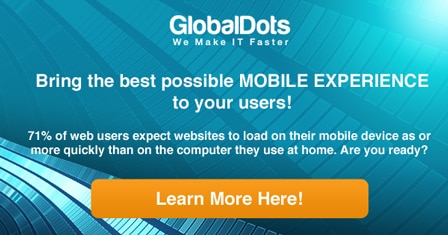4G can at times feel faster, and was at times promised to be even ten times faster than 3G or consumers ISPs, but would technology experts approve?
The networks are actually performing the best they can but will all the additional content such as share buttons, images, and videos added to the website, it is hard to keep up. This is where web performance rules come in handy, and this is also why 4G will sometimes even perform slower than 3G, or even dial-up, regardless of all shininess of a new network that was predicted, if some basic performance rules are not implemented.
How One AI-Driven Media Platform Cut EBS Costs for AWS ASGs by 48%

The main difference between 4G and 3G is that 4G network is IP based and transfers information between phone carrier in the same way as a browser would communicate with the Internet. The theoretical maximum of 4G speed is 100 Mbps, but remains only – a theoretical maximum.
The important note here? You can’t ignore performance rules even if you are relying on 4G network advances in connectivity. The networks are improved enough, but the delivered content isn’t yet light enough to travel as fast as you’d like it to.
Mobile Network vs Consumer ISPs
The limitations and physical route to mobile network are rather hidden compared to that of consumer internet service providers. But, as always, it can be measured, and round trip times can be compared.
A research has recently been done and pings were simultaneously sent to Google from Los Angeles and New York using 4G LTE agents and Last Mile agents (dedicated devices at End User’s home).
Ping round trip times for both Last Mile and 4G LTE agents are illustrated below.

Last Mile proved better in performance and consistency:
- Last Mile median Ping RTT: 21ms
- 4G’s median Ping RTT: 55ms
- Last Mile standard deviation:19ms
- 4G’s standard deviation: 132ms
This can be only intervened by implementing network optimizations in the 4G networks.
Further data collected from the same research suggests:
- Verizon FIOS maintained the fastest overall median RTT of the Last Mile agents, followed by AT&T Uverse and Time Warner
- 4G LTE lagged well behind all consumer ISPs with AT&T 4G and T-Mobile 4G taking more than 4 times as long as Verizon FIOS to return their packets
- Verizon proved fastest within the 4G LTE networks with a median RTT of 44ms, nearly 26% faster than its AT&T and T-Mobile counterparts
The overall conclusion is that greater latency exists in mobile networks than in consumer ISPs. The solution is less bytes and less network activity as the only feasible answer.

Add to this the rapid growth of mobile usage (more than 1.2. billion mobile Web users) and the quadrupling number of mobile searches, the fact that 79 percent of large online advertisers still do not have a mobile optimized site (Google/Kelsey), and finally the fact that mobile device CPU capabilities are lower than that of desktop computer, and it is obvious that you must:
- reduce the initial page load time
- make redirects cacheable
- launch a mobile optimized website
Keep in mind that 80% of customers will abandon a mobile site if they have a bad user experience. Addditionaly, 21% of mobile device users expect their load times on their phone to be about equal with their desktop, although mobile sites are affected by extra factors such as slower parsing of Java Script, slower network connection, smaller browser cache memory, slower parsing of HTML… Mobile data usage will to grow 20-fold by 2017, as cost per megabyte continues to fall.
Mobile caches (replace “www.” with “m.”, for example) unlike desktop browser caches, cannot hold a large amount of content. It is thus important to note that as many landing page redirections as possible should be avoided – completely. If the mobile site is served from the same location as the main site, it is best to avoid redirects and serve the mobile site to the user directly (see our post on Google’s Best Practices for Mobile Optimization). Minimizing the amount of JavaScript needed to render the page, and deferring parsing of unneeded JavaScript until it needs to be executed can reduce the initial load time of your page, and all this combined is the only that can help you avoid latency, the technology will not keep all of its promises on its own.

Related articles
- There’s No Avoiding Network Latency on 4G
- Improving Search Rank by Optimizing Your Time to First Byte
- Content Delivery Network – What You Really Need To Know
- Latency: 4 Ways You Can Fight Back and Accelerate Your Applications
About GlobalDots
With over 10 years of experience, GlobalDots have an unparallel knowledge of today’s leading web technologies. Our team know exactly what a business needs to do to succeed in providing the best online presence for their customers. We can analyse your needs and challenges to provide you with a bespoke recommendation about which services you can benefit from.
GlobalDots can help you with the following technologies: Content Delivery Network, DDoS Protection, Multi CDN, Cloud performance optimization and infrastructure monitoring.






